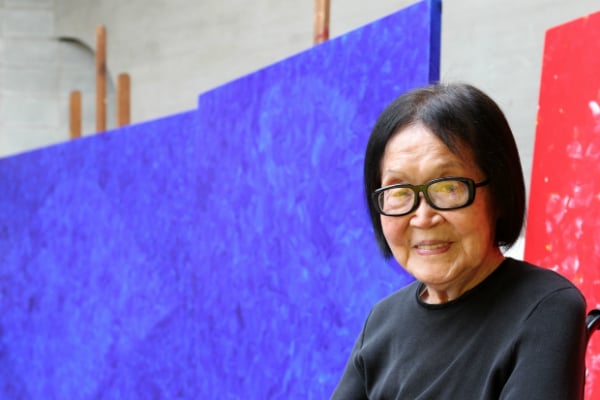
Photo viaL: Frostlake
The Japanese-Brazilian artist Tomie Ohtake died on Thursday at the age of 101 in the Syrian-Lebanese hospital in São Paolo. She had been admitted a week ago, suffering from pneumonia, Folha de São Paolo reports.
Ohtake, one of Brazil’s most celebrated artists, is known for her abstract paintings in primary colors, which combine geometric and organic forms. She was also a reputed sculptor and printmaker.
Born in Kyoto in 1913, Ohtake went to Brazil in 1936 to visit a relative, but stayed in the country when Japan entered World War II. She began to paint in the early 50s, after a visit to the studio of the painter Keisuke Sugano. Despite achieving fame for her elaborate abstractions, Ohtake’s early work was figurative, a style favored by other immigrant artists at the time.
Around the mid-1950s, Ohtake began exploring the fields of color and geometry. This drew comparisons between her work and that of the then rising Neo-concrete movement, formed by a group of artists including Lygia Clark, Mira Schendel, Lygia Pape, and Helio Oiticica. Ohtake, however, never joined the movement, which was hugely influenced by Theo van Doesburg’s cerebral, machine-like art. “I have always drawn curves and lines, but I do everything by hand, so it’s not perfect,” she told Folha de São Paolo in 2013. “I like painting free forms.”
Ohtake had her first exhibition in 1957 at the Salão Nacional de Arte Moderna, and was included in the São Paulo Bienal in 1961. Around that time, the artist began her acclaimed series of “blind paintings,” for which she blindfolded herself to paint. Many saw the works as a critique of the extreme rationalism that dominated the Brazilian scene at that moment. During the 80s, the artist completed numerous public sculpture projects.
Ohtake continued working until the end of her life, working in her studio three days a week. In November 2001, a cultural center bearing her name opened in São Paolo.
“We have lost one of the most meaningful names in abstractionism in the country and in the world,” Rio de Janeiro state’s culture secretary said in a statement. “Tomie was an artist who beautifully brought together cultures, colors and geometry, mixing the red of Japan with the yellow of her adopted country.”